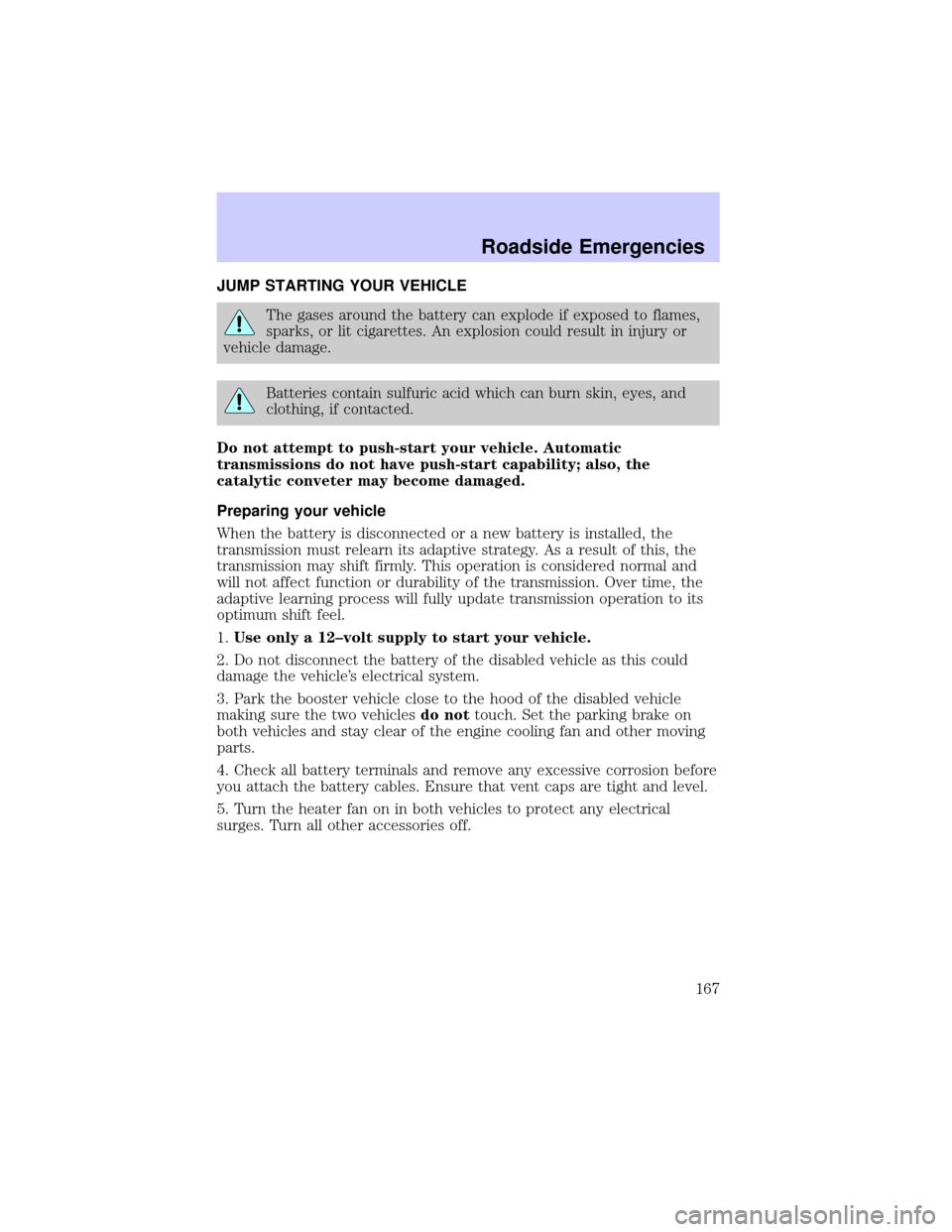Page 136 of 240

Starting the engine
Note:Whenever you start your vehicle, release the key as soon as the
engine starts. Excessive cranking could damage the starter.
1. Turn the key to 5 (START)
without pressing the accelerator
pedal and release as soon as the
engine starts. The key will return to
4 (ON).
2. If the temperature is above ±12É
C (10É F) and the engine does not
start within five seconds on the first
try, turn the key to OFF, wait 10
seconds and try again.
3. If the temperature is below -12É C (10É F) and the engine does not
start in 15 seconds on the first try, turn the key OFF and wait 10
seconds and try again. If the engine does not start in two attempts, press
the accelerator pedal all the way to floor and hold. Turn the key to
START position.
4. When the engine starts, release the key, then release the accelerator
pedal gradually as the engine speeds up.
5. After idling for a few seconds, apply the brake and release the parking
brake.
Using the engine block heater (if equipped)
An engine block heater warms the engine coolant, which improves
starting, warms up the engine faster and allows the heater-defroster
system to respond quickly. Use of an engine block heater is strongly
recommended if you live in a region where temperatures reach -23É C
(-10É F) or below.
For best results, plug the heater in at least three hours before starting
the vehicle. Using the heater for longer than three hours will not harm
the engine, so the heater can be plugged in the night before starting the
vehicle.
To prevent electrical shock, do not use your heater with
ungrounded electrical systems or two-pronged (cheater)
adapters.
3
2
1
5
4
Driving
136
Page 167 of 240

JUMP STARTING YOUR VEHICLE
The gases around the battery can explode if exposed to flames,
sparks, or lit cigarettes. An explosion could result in injury or
vehicle damage.
Batteries contain sulfuric acid which can burn skin, eyes, and
clothing, if contacted.
Do not attempt to push-start your vehicle. Automatic
transmissions do not have push-start capability; also, the
catalytic conveter may become damaged.
Preparing your vehicle
When the battery is disconnected or a new battery is installed, the
transmission must relearn its adaptive strategy. As a result of this, the
transmission may shift firmly. This operation is considered normal and
will not affect function or durability of the transmission. Over time, the
adaptive learning process will fully update transmission operation to its
optimum shift feel.
1.Use only a 12±volt supply to start your vehicle.
2. Do not disconnect the battery of the disabled vehicle as this could
damage the vehicle's electrical system.
3. Park the booster vehicle close to the hood of the disabled vehicle
making sure the two vehiclesdo nottouch. Set the parking brake on
both vehicles and stay clear of the engine cooling fan and other moving
parts.
4. Check all battery terminals and remove any excessive corrosion before
you attach the battery cables. Ensure that vent caps are tight and level.
5. Turn the heater fan on in both vehicles to protect any electrical
surges. Turn all other accessories off.
Roadside Emergencies
167
Page 232 of 240
Comfort and convenience
Cargo nets
Cargo organizer
Electrochromic compass mirror
Electrochromic compass mirror with temperature display
Engine block heaters
HomeLinkt
Remote start system
Travel equipment
Automatic headlamps with daytime running lights (DRL)
Daytime running lights (DRL)
HomeLinkt
Protection and appearance equipment
Carpet floor mats
Door edge guards
First aid kit
Flat splash guards
Front end covers
Highway safety kit
Locking gas cap
Molded splash guards
Styled hood deflector
Universal floor mats
Accessories
232
Page 235 of 240

plastic parts ....................186±187
safety belts ..............................189
washing ....................................184
waxing .....................................184
wheels ......................................185
windows ..................................189
wiper blades ............................187
Clock ............................................55
Compass, electronic ....................60
calibration .................................62
set zone adjustment .................61
Console ........................................56
Controls
power seat ...............................103
steering column ........................67
Coolant
checking and adding ..............199
refill capacities ................203, 224
specifications ..................226±227
Cruise control (see Speed
control) ........................................63
Customer Assistance ................154
Ford accessories for your
vehicle .....................................190
Ford Extended Service
Plan ..........................................176
Getting assistance outside the
U.S. and Canada .....................180
Getting roadside assistance ...154
Getting the service you
need .........................................174
Ordering additional owner's
literature .................................181
The Dispute Settlement
Board .......................................177
Utilizing the
Mediation/Arbitration
Program ...................................180D
Daytime running lamps (see
Lamps) .........................................40
Defrost
rear window ..............................39
Dipstick
automatic transmission
fluid ..........................................216
engine oil .................................194
Doors
lubricant specifications ..........226
Driving under special
conditions
through water .........................148
E
Electronic message center .........76
Emergencies, roadside
jump-starting ..........................167
Emission control system ..........212
Engine ........................................227
check engine/service engine
soon light ..................................10
cleaning ...................................186
coolant .....................................199
idle speed control ...................197
lubrication
specifications ..................226±227
refill capacities ........................224
service points ..........................193
starting after a collision .........155
Engine block heater .................136
Engine oil ..................................194
change oil soon warning,
message center .......................194
checking and adding ..............194
Index
235